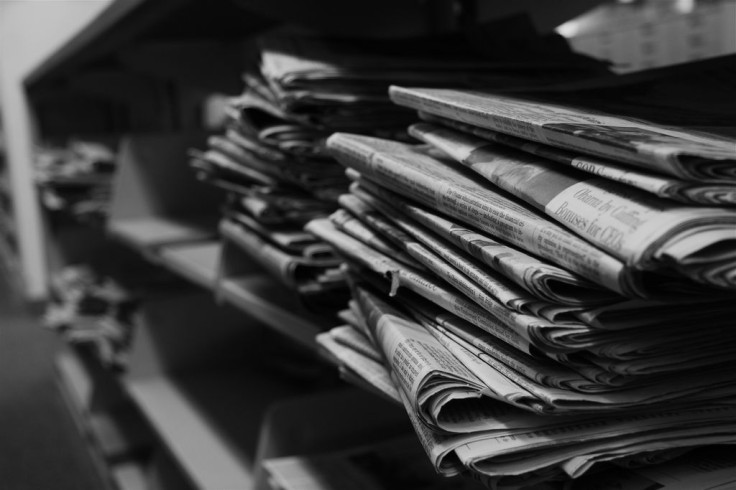Racial And Political Bias: The News Makes People More Divided, But You Can Fight It

To watch the news in 2015 is to be reminded, almost daily, of how divided people are in the United States. We have political infighting and fatal shootings whose motivations can’t seem to shake a deep-seated racial bias. We’re told this is normal, to be expected.
But mounting psychological research argues these stories are fraught with a dangerous selection bias, one that makes people less sympathetic to those not part of their supposed in-group. We pick sides. We draw clear lines in the sand, based on hard-formed opinions about world views and skin color, which set us apart from one another — though, not because of any explicit desire to hate, psychologists find, but the more insidious fact that it just seems correct.
The difficulty in staying neutral, or at least open-minded, seems to be one inherent in how our brains work, says David Pietraszewski, a postdoctoral fellow at the Max Planck Institute in Germany. And the news isn’t helping to escape that compulsion.
“When people express opinions that reflect the views of different political parties, our minds automatically and spontaneously assign them to rival coalitions.” We can’t help it, in other words, when we feel a visceral opposition to people that don’t share our views. Oftentimes, Pietraszewski explains, our ability to consider alternate possibilities gets swallowed up by our needs for certainty and sameness. When we watch the news, these ill-formed boundaries get reinforced.
That effect was shown in a recent study Pietraszewski helped carry out, which was published in the journal Cognition. He and a team of evolutionary psychologists wanted to find out how people categorize themselves on the basis of political views, race, gender, and age. While gender and age played no role, they found politics and race demarcated the groups the most, and in a mutually exclusive way. If politics divided people, race didn’t play a factor. It only mattered on its own insofar as it caused people to form groups.
“This is why successful politicians like Benjamin Disraeli, Arnold Schwarzenegger, or Barack Obama need not be ethnically the same as the majority of their supporters,” said John Tooby, study co-author and professor of anthropology at the University of California, Santa Barbara. “Coalition is the real coin of the evolved mind, not race.”
Cooperation, Not Separation
That doesn’t mean news stories don’t perpetuate certain stereotypes on the basis of race. They do, boldly and often. What Pietraszewski’s research suggests is that political views just happen to overshadow race; when put in the spotlight, racial tensions can just as easily incite emotional responses that create clear “us versus them” dynamics. Sometimes that means watching cable news and criticizing the looters stealing bags of chips from convenience stores. Sometimes it means being the one who loots.
Temple Northup isn’t so sure the brain’s susceptibility to picking sides deserves blame. That distinction, he argues, seems to belong to the information people receive via their news sources. The quality of our thoughts is only as good as the information it’s fed, after all.
An assistant professor at University of New Hampshire’s Jack J. Valenti School of Communication, Northup recently investigated the extent to which news media can influence people’s implicit racial bias. He and his colleagues used a popular method for discovery, the Implicit Association Test (IAT). In taking the IAT, subjects are tasked with pairing positive and negative words with white and black faces. If the time it takes to assign positive words to black faces is greater than assigning them to white faces, scientists presume a degree of bias. The greater the lag, the more severe the bias.
Northup conducted several studies using the IAT designed to analyze racial bias in the U.S. and a bias for “foreigners” in Austria. In each experiment, he found reading a newspaper about poor race relations or watching a newscast about foreign tension increased people’s implicit bias on the IAT. This didn’t mean people were strictly racist — the IAT only uses millisecond-long intervals to judge bias — but it did reveal hints of the news’ influence.
“Given that long-term exposure to media stereotypes seems to influence evaluations of African-Americans and foreigners, more research investigating this implicit effect is needed,” Northup said. Among other duties, news organizations have a responsibility to inform with neutrality, not just in how they cover stories but what it is they’re covering. The emerging research suggests that goal is seldom achieved.
According to Pietraszewski, consumers of news have a simple and effective way to avoid the traps of ugly selection biases: cooperation. Much of the news tells people how the world is falling apart, and it implicitly assigns reasons for those downfalls based on things like skin color and belief. It’s up to the viewer, the reader, to look past them by exercising empathy.
“What is required is cooperation that cross-cuts the previous boundary, and the more the better,” Pietraszewski said. “Reducing racial discrimination or political polarization will be no easier or harder than changing patterns of cooperation.”



























